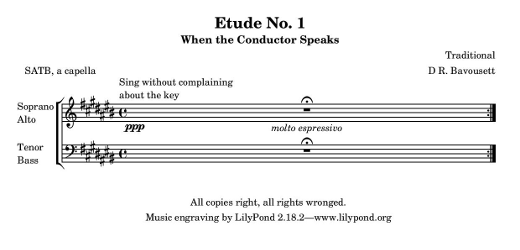

The relative octave method will save alot of time in manual entry. If you want a different octave than what that rule results in, you can add an octave mark, using (') for one octave higher than the default, or (,) one octave lower (don't add the parentheses marks, just the appostrophe or comma symbols). We'll use an entry method known as "relative octave entry" which allows us to set the octave of the beginning note and then lilypond will choose the octave of the next note by choosing that letter name that is closest to previous note. As it turns out, we won't need to use these octave marks on every note. Using octave marks on every note is known as "absolute octave entry' entry method. c''''' - four octaves above middle C (C8).c'''' - three octaves above middle C (C7).c, - three octaves below middle C (C1).c' is middle C, c'' is one octave higher. The octave is indicated by the appostrophe (') character or the comma (,) character. Instead the Dutch 'is' (sharp) and 'es' (flat) are attached to the letter name, i.e. The lilypond program doesn't use '#' (sharp) or 'b' (flat) or even those words.

For instance the comparison between Tone.js and lilypond for the note 'middle C' In lilypond the pitch is given names using lowercase only. In Tone.js the pitch can take on different forms, i.e. Common free text editors include sublime text (free to try), textedit (free). For writing code, it's best to use a basic text editor instead of full featured word processor (like Word) because word processors sometime insert invisible characters that cause problems in the code yet it doesn't appear anything is wrong (the problem is an invisible character!) Yeah, that can cause frustration trying to debug invisible stuff. You might call it Music10Lilypond.txt (or whatever). For this class I suggest you create a text file that you can keep all of your lilypond note code for assignments. This page is a short introduction to the lilypond file format (of which we're only using a small portion). I've adopted the lilypond language as an input format for Tone.js enabled web pages. It can produce beautiful music scores and it has a texted based input format. Lilypond is free notation software from the GNU project. In an effort to create a more interactive music theory learning environment, we're combining the power of two different software systems: Tone.js and Lilypond. Lilypond is free music notation software.


 0 kommentar(er)
0 kommentar(er)
